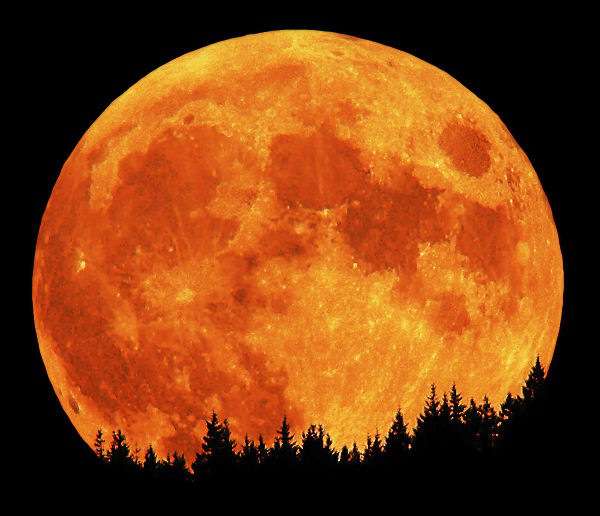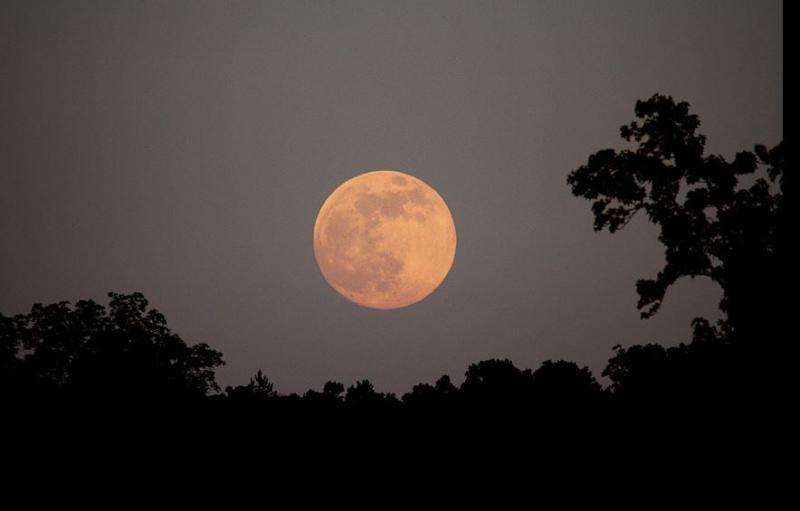What is a hunter's moon?

If you live in the northern hemisphere, than stargazing during the early autumn months can a bit tricky. During certain times in these seasons, the stars, planets and Milky Way will be obscured by the presence of some very beautiful full moons. But if you're a fan of moongazing, then you're in luck.
Because it is also around this time (the month of October) that people looking to the night sky will have the chance to see what is known as a hunter's moon. A slight variation on a full moon, the hunter's moon has long been regarded as a significant event in traditional folklore, and a subject of interest for astronomers.
Definition:
Also known as a sanguine or "blood" moon, the term "hunters moon" is used traditionally to refer to a full moon that appears during the month of October. It is preceded by the appearance of a "harvest moon", which is the full moon closest to the autumnal equinox (which falls on the 22nd or 23rd of September).
The hunter's moon typically appears in October, except once every four years when it doesn't appear until November. The name dates back to the First Nations of North America. It is so-called because it was during the month of October, when the deers had fatted themselves over the course of the summer, that hunters tracked and killed prey by autumn moonlight, stockpiling food for the coming winter.
Characteristics:
Although typically the moon rises 50 minutes later each day, things are different for the hunter's moon (as well as the harvest moon). Both of these moons usually rise 30 minutes later on each successive night, which means that sunset and moonrise are not far apart.

This means there is prolonged periods of light during this time of the the year, which is the reason why these moons have traditionally been used by hunters and farmers to finish their work.
This difference between the timing of the sunset and moonrise is due to its orbit, meaning that the angle the moon makes with the horizon is narrower during this time of year. The hunter's moon is generally not bigger or brighter than any of the other full moons. Thus, the only difference between it and other full moons is the that the time between sunset and moonrise is shorter.
History:
Because the approach of winter signaled the possibility of going hungry in pre-Industrial times, the hunter's moon was generally accorded with special honor, historically serving as an important feast day in both northern Europe and among many Native American tribes.
Traditionally, Native American hunters used the full moon of October to stalk deer and to spot foxes at night as they prepared for the coming winter. Because the fields were traditionally reaped in late September or early October, hunters could easily see foxes and other animals that came out to glean from the fallen grains.
The hunter's moon is accorded similar significance in Europe, where it was also seen as a prime time to hunt during the post-harvest, pre-winter period when conditions were optimal for spotting prey. However, the term did not enter into usage for Europeans until after they made contact with Indigenous Americans and began colonizing North America.
The first recorded mentions of a "hunter's moon" began in the early 18th century. The entry in the Oxford English Dictionary for "hunter's moon" cites a 1710 edition of The British Apollo, where the term is attributed to "the country people". The names are now referred to regularly by American sources, where they are often popularly attributed to "the Native Americans".
In India, the harvest festival of Sharad Purnima, which marks the end of the monsoon season, is celebrated on the full moon day of the lunar month of Ashvin (September-October). There is a traditional celebration of the moon during this time that is known as the "Kaumudi" celebration – which translated, means "moonlight".
Interesting Facts:
Sometimes, the harvest moon is mistaken for the hunter's moon because once every four years or so the harvest moon is in October instead of September. When that happens, the hunter's moon is in November. Traditionally, each month's full moon has been given a name, although these names differ according to the source.
Other full moons of interest include the Wolf moon in January, the strawberry moon in June, the sturgeon moon in August, the Cold moon in December, and the pink moon in April. All of the full moons have different characteristics due to the location of the ecliptic – i.e. the path of the Sun – at the time of each.
The hunter's moon is also associated with feasting. In the Northern Hemisphere, some Native American tribes and some places in Western Europe held a feast day. This feast day, the Feast of the hunter's moon, was not been held since the 1700's. However, the Feast of the hunter's moon is a yearly festival in Lafayette, Indiana, which has been held in late September or early October every year since 1968.
Source: Universe Today


















